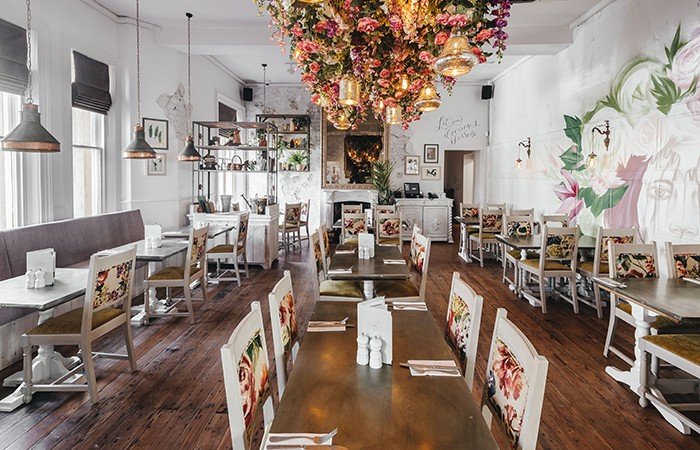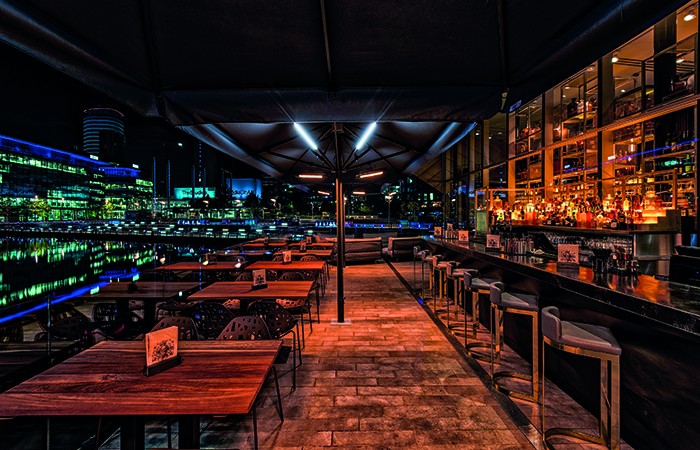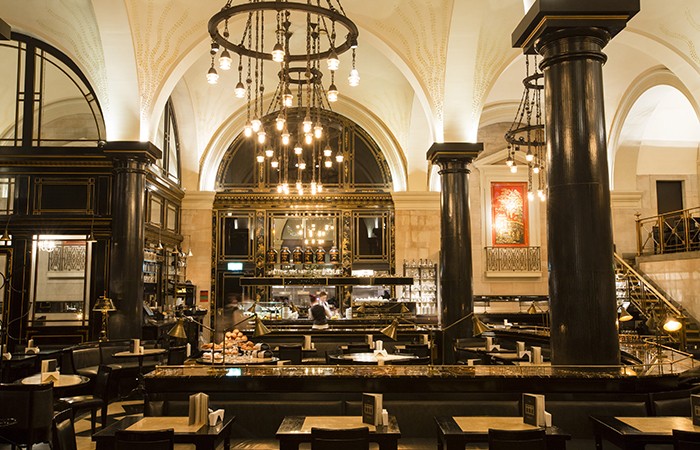Restaurant and Bar Interior Trends
The UK restaurant and bar sector has gone through something of a transformation over the last decade. This has been driven by a shift in consumer habits, economic climate, the shape of the high street, growth in cities outside London and innovations within the food and drink sector.
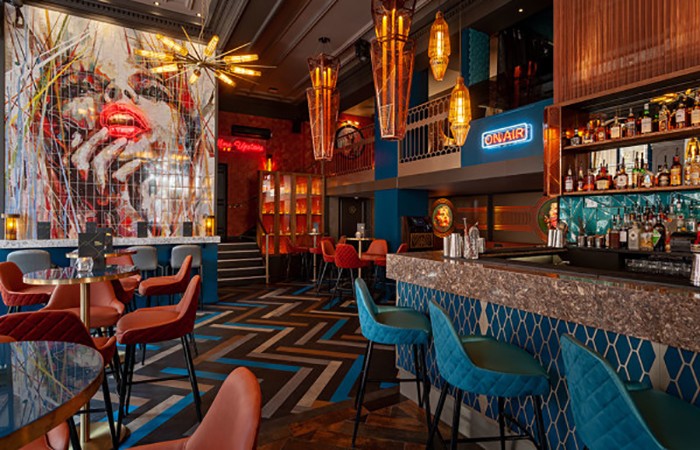
Dirty Martini, Manchester. Flooring by Amtico, Interior by Grapes Design. © Michael Franke
A key driver for market growth over the last decade has been the branded casual dining sector as managed or ‘group owned’ restaurants have increased by 27.3% in the five years to December 2018. But we saw the first signs of a decline at the end of 2018 when CGA and Axil Partners reported an annual decline of 0.1% in their Market Growth Monitor.
This was the first decline in nine years and could be attributed to overcapacity, soaring business rates, labour costs and waning consumer confidence. It could also be attributed to consumers wanting a unique experience.
The pace of closures in this segment has accelerated in the first quarter of 2019, to 1.1% at the end of March (5,785 fewer group restaurants than 12 months prior). Drilling deeper into CGA’s data, we see that the rate of closures is not uniform across Britain as South England and London has declined at a greater rate than the rest of Britain, with Scotland showing an increase.
It also appears that smaller restaurant brands are gaining share at the expense of larger groups. The other standout segment of the licensed sector has been cafés and wine bars. The rise of the casual but premium wine bar is one reason of this, another is the emergence of hybrid concepts that morph from a daytime coffee shop to a cocktail and wine bar by night.
Design Insider caught up with BCFA members and designers working in this sector to identify five key interior and consumer trends:
1. Fauna and Flora
This trend was endorsed at the Casual Dining Restaurant & Pub Awards 2019, as The Florist brand won three trophies including New Casual Dining Concept of the Year, Best New Restaurant Site and Best Designed Casual Dining Restaurant of the Year – the latter two awards for its newly opened Liverpool venue.
Whilst there has been a rise in botanic and eclectic influences since 2014, we have seen this evolve further with influences from the global traveller and a focus on sustainability. The result is an increased use of colour, faux flowers and fauna. Examples include: Tattu Manchester, Tattu Cherry Blossom bar in Leeds, Marstons Lost and Found, The Florist in Liverpool, the Sushi Samba in Covent Garden – all encompass an explosion of colour and Instagrammable moments.
2. Customer Experience
“The focus on the customer experience is more important today than ever, with every touchpoint considered. Good design goes beyond creating a beautiful interior, as it also needs to function seamlessly. Service, spatial layout, operation and design all come together to create a memorable experience.” – David Collins Studio.
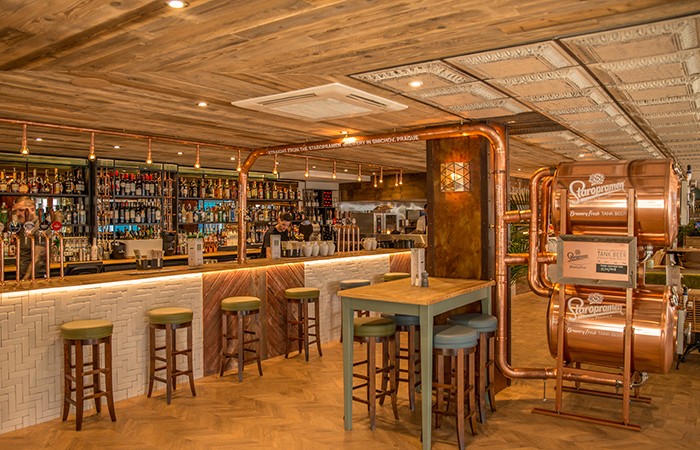
The Herbalist. Furniture by Taylor’s Classics
We see an emerging trend for activity bars, examples include: Bounce (table tennis), Swingers (golf) and Flight Club (darts). The target audience is not limited to a specific age group, so this trend could be a response to consumers wanting to be more active and indulging in shared experiences.
3. Instagrammable moments
The purists say that whilst Instagram it a great source of inspiration is should not drive design. But, creating Instagrammable moments is often a key element in the client’s brief. There are now blogs recommending the best Instagram food hash tags to use in 2019. Hashtags range from simply #food with over 335 million posts and #drinks with over 37 million posts to more sophisticated and targeted postings such as #cleaneating with 44 million posts and emerging trends for #mocktails with 453 thousand posts.
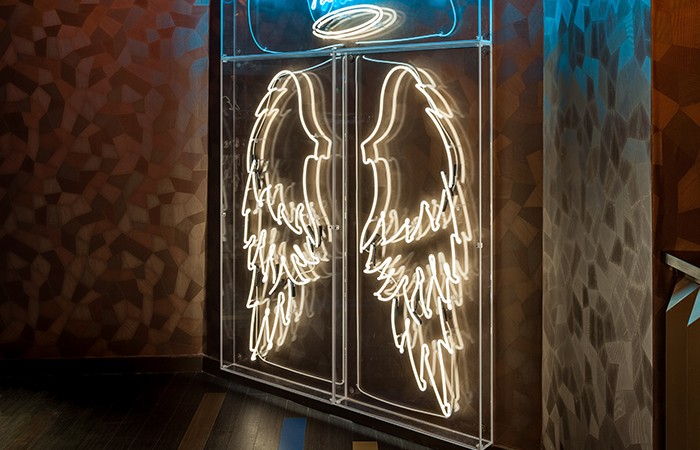
Dirty Martini, Manchester. Flooring by Amtico, Interior by Grapes Design. © Michael Franke
“Creating Instagrammable moments is essential in driving engagement and awareness. Our angel wings design with the slogan ‘get your halo dirty’ at Dirty Martini Manchester has generated significant social media engagement with almost 1,700 posts, including celebratory endorsements.” – Darren Grapes of Grapes Design.
A list of the most Instagrammable London restaurants was published in the Evening Standard in January 2019, Glamour Magazine published a UK list in its March 2019 issue and even Visit London has a list of Instagrammable restaurants on its website.
4. Outdoor space
Outdoor space is becoming as important as indoor. Many venues are now installing retractable roofs so space can be used all year around.
The design of outdoor spaces is also more considered and sophisticated. A few examples include: Golden Bee on Old Street’s £1m roof terrace with £100k retractable roof; Zetter has a 2000 sqm roof terrace; Savage Garden located on the 12th floor of DoubleTree by Hilton and the outside bar at The Alchemist in Media City.
5. Uniqueness
“Timeless, considered design, that is authentic and localised to the space is what counts. Good interior design is important across all price points, so it’s reassuring to discover examples of proactive manufacturers offering a “bespoke look” through clever adaptations of standard collections.” – David Collins Studio.
It is interesting to see more collaborations emerging between chains and designers, reflecting the desire to create more personal brands. Chains moving away from an overall branded feel, meaning that restaurant designs are no longer themed, the provenance of food and drink is at the heart and informs the space, without an obvious reference to a ‘theme’ featured in the design.
Companies mentioned
Taylors Classics | David Collins Studio | Grapes Designs | Amtico | Dirty Martini
You can find out more about specific trends in our Design Insider Magazine, released in 2020. Sign up to receive your free copy here.






